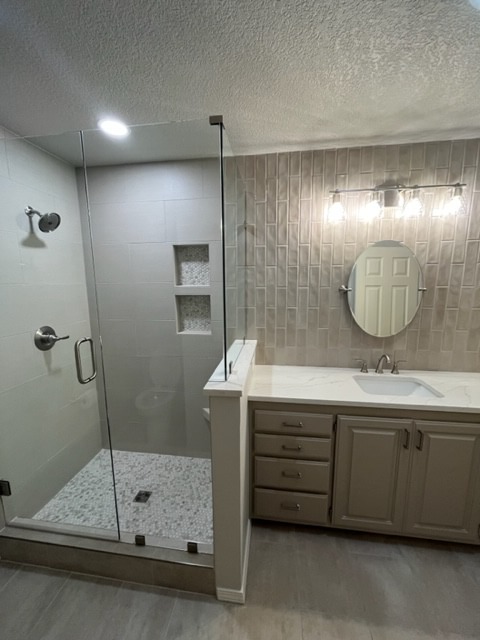Discover the Top Patterns and Developments Shaping the Future of General Renovation Practices
In the world of general remodelling methods, a transformative change is underway, pushed by a wave of development and emerging trends that promise to redefine the method we approach restoring and refurbishing areas. As the market browses towards a future marked by sustainability, modern technology assimilation, and effectiveness, it comes to be progressively critical to remain abreast of the growths forming this evolving landscape. From the extensive fostering of smart home technologies to the use of digital reality tools in design procedures, the possibilities seem endless. What do these advancements mean for the future of restoration techniques, and how will they impact the way we picture, prepare, and execute improvement projects?

Lasting Products Combination

One secret advantage of integrating sustainable products right into remodellings is the reduction of waste and environmental impact. By repurposing materials or picking options made from sustainable sources, the construction sector can significantly reduce its carbon impact. Furthermore, lasting products typically boast greater quality and longevity, leading to longer-lasting renovations that need less upkeep with time.
Additionally, the assimilation of lasting products can enhance the overall appearances of a restoration job. Designers and architects are finding ingenious methods to incorporate eco-friendly products into contemporary and fashionable styles, showing that sustainability and visual allure can go together (deck contractor). As the demand for sustainable practices proceeds to rise, the assimilation of these materials is expected to end up being the criterion in general improvement methods
Smart Home Technologies Adoption
Significantly integrated into modern-day families, the adoption of smart home innovations is reshaping the means we engage with our space. From voice-activated aides like Amazon's Alexa or Google Home to wise thermostats, lights, protection systems, and home appliances, the smart home fad is reinventing the idea of home benefit and performance.

Furthermore, the assimilation of expert system and device knowing formulas into smart home tools enables them to discover user choices and adjust setups as necessary, additional enhancing individual convenience and benefit. As smart home modern technologies remain to advance and end up being much more available, their fostering is expected to end up being also much more widespread, shaping the future of residential living.
Digital Truth Style Devices
Virtual Fact Style Tools provide a transformative strategy to envisioning and planning restoration projects (deck contractor). By immersing users in a digital environment, these devices enable them to experience a reasonable representation of the last design prior to any physical changes are made. This modern technology permits property owners, designers, and service providers to team up better, guaranteeing that every person included has a clear understanding of the project scope and vision
One of the key advantages of Virtual Truth Style Tools is their ability to improve the decision-making process. Individuals can explore different materials, layouts, and setups in real-time, enabling them to make enlightened options that align with their choices and budget constraints. Furthermore, these devices can aid determine potential concerns or problems in the style at an early stage, inevitably conserving time and resources during the improvement process.
Energy-Efficient Solutions Implementation
Amidst the growing emphasis on lasting techniques in the building and construction sector, there is a significant change in the direction of carrying out energy-efficient solutions in improvement projects. Energy-efficient options are coming to be a cornerstone in contemporary improvement practices as they provide numerous advantages to both homeowners and the environment. These solutions encompass a variety of innovations and layout principles targeted at minimizing energy usage, lowering utility costs, and decreasing the ecological impact of buildings.
One prevalent trend in energy-efficient improvement is the assimilation of clever home technology. This includes the usage of programmable thermostats, energy-efficient illumination systems, and wise devices that can be controlled from another location. Additionally, the adoption of high-efficiency home heating, air flow, and cooling (COOLING AND HEATING) systems plays a crucial role in enhancing the overall power performance of restored spaces.
Furthermore, the unification of lasting materials such as energy-efficient windows, insulation, and roofing can dramatically enhance a structure's thermal performance, more minimizing power demands. By focusing on total renovation cost energy performance in renovation projects, stakeholders can not only attain price savings in the lengthy run yet likewise add to a greener and much more sustainable constructed setting.
Green Structure Qualification Trends
The need for green structure qualification is gradually increasing in the building industry as stakeholders seek to validate their commitment to lasting building methods. Eco-friendly structure certifications, such as LEED (Leadership in Power and Environmental Layout) and BREEAM (Structure Research Establishment Environmental Evaluation Method), are becoming increasingly preferred as they show a building's ecological performance and sustainability. These qualifications think about different facets, consisting of energy effectiveness, water usage, products selection, interior ecological quality, and the overall effect on the environment.
One of the present fads in green building certification is the assimilation of smart innovations to enhance a building's sustainability. This consists of using IoT (Net of Things) gadgets for keeping track of energy usage, optimizing indoor ecological conditions, and enhancing general functional effectiveness. Furthermore, there is an expanding focus on my review here health and wellness aspects within eco-friendly structure requirements, concentrating on factors like air high quality, all-natural light, and biophilic layout elements.

Verdict
In final thought, the future of basic renovation techniques is being formed by the assimilation of lasting materials, adoption of clever home technologies, use of online reality layout tools, application of energy-efficient options, and fads in eco-friendly building certification. These advancements are driving the sector in the direction of even more ecologically friendly and technically advanced services, inevitably boosting the quality and performance of remodelling tasks.